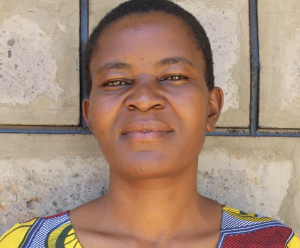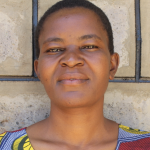July, 2022: Shianda Community Spring Protection Complete!
Shianda Community now has access to clean water! We transformed Ben Keverenge Spring into a flowing source of naturally filtered water thanks to your donation. Our team also trained the community on improved sanitation and hygiene practices. Together, these components will unlock the opportunity for community members to live better, healthier lives.

"Access to reliable, safe water is going to impact my life because it is easier to access water and no time is wasted in the spring. To add [to] that, me and my family, we are safe and free from waterborne diseases," said Carolyn Changala, a 38-year-old farmer.

Carolyn collects water at the spring.
Children were just as excited as adults about the new waterpoint.

Dickson fills his drinking glass.
"Safe water from this water point will impact my life because [the] time that was wasted at the water point shall be recovered in my studies," said Dickson K., age 11. "Before the water point was implemented, people used to crowd at the water point. This wasted a lot of time and aroused a lot of conflicts. But now I can access water easily and have enough time to do my homework and study. [I] am going to excel in my academics, and this will make my parents and teachers proud of me."
Preparing for Spring Protection
Community members worked together to source and carry all locally available construction materials to the spring. These included bricks, sand, stones, and fencing poles. Some people also chiseled away at large rocks to break them down into gravel. Because people have to carry most items by hand, the material-collection process can take anywhere from a few weeks to months.
When the community was ready, we sent a lorry to deliver the remaining construction materials, including cement, plastic tarps, and hardware. Then, our construction artisan and field officers deployed to the spring to begin work. Individual households provided meals throughout each day to sustain the work team.
From Open Source to Protected Spring: A Step-by-Step Process
At last, it was time to dig in at the spring! Locals lent their strength to the artisans to help with the manual labor.

First, we cleared and excavated the spring area. Next, we dug a drainage channel below the spring and several runoff diversion channels above and around the spring. These help to divert surface contaminants away.
To ensure community members could still access water throughout the construction process, we also dug temporary channels from the spring's eye around the construction site. This allowed water to flow without disrupting community members' tasks or the construction work.

Laying the foundation plastic and wire.
Excavation created space for setting the spring's foundation, made of thick plastic tarp, wire mesh, concrete, and waterproof cement. After establishing the base, we started brickwork to build the headwall, wing walls, and stairs.

Beginning brickwork.
Once the walls had grown tall enough, we began one of the most crucial steps: setting the discharge pipe. The discharge pipe needs to be positioned low enough in the headwall so the water level never rises above the spring's eye, yet high enough to allow room for the average jerrycan (a 20-liter container) to sit beneath the pipe without making contact.

Setting the discharge pipe.
If we place the discharge pipe too high above the spring's eye, backpressure could force water to emerge elsewhere. Too low, and community members would not be able to access the water easily. We embedded the pipe using clay (or mortar when clay is in short supply) and placed it at an incline to ensure water flows in the right direction.
In coordination with brickwork, we pitched stones on both sides of the spring's drainage channel. We then cemented and plastered each stone, forming the rub walls. These walls discourage people and animals from standing in that area, which could cause soil erosion and a clogged drainage area.

Plastering the rub walls.
We then cemented and plastered both sides of the headwall and wing walls. These finishing layers reinforce the brickwork and prevent water in the reservoir from seeping through the walls. In turn, enough pressure builds in the reservoir box to push water out through the discharge pipe.
As the headwall and wing walls cured, we cemented and plastered the stairs and installed several tiles beneath the discharge pipe. The tiles protect the concrete from the falling water's erosive force while beautifying the spring and facilitating easy cleaning of the spring floor.

Plastering the stairs.
The final stage of construction is backfilling the reservoir box behind the discharge pipe. We cleared the collection box of any debris that may have fallen during construction. Then we redirected the temporary diversion channels back into the reservoir box, channeling water into this area for the first time. We closed off all of the other exits to start forcing water through the discharge pipe only.

Backfilling the reservoir box.
We filled up the reservoir area with the large, clean stones community members had gathered, arranging them in layers like a well-fitting puzzle. We covered the rocks with a thick plastic tarp to minimize potential contamination sources, then piled enough dirt on top to compensate for future settling.

Community members transplant grass.
Community members transplanted grass onto the backfilled soil to help prevent erosion. Finally, the collection area was fenced to discourage any person or animal from walking on it. Compaction can lead to disturbances in the backfill layers and potentially compromise water quality.
The entire construction process took about two weeks of work and patience to allow the cement and plaster to finish curing. As soon as the spring was ready, people got the okay from their local field officers to fetch water.

The completed spring.
The spring was officially handed over to the community to mark their ownership of the water point, with two pastors praying over the new spring to bless it. Happiness, thanksgiving, and appreciation were the order of the day, flowing in all directions.
Training on Health, Hygiene, and More
Together with the community, we found their preferred date for training while considering other community calendar events, such as the agricultural season and social events. We requested a representative group of community members to attend training to relay the information learned to the rest of their family and friends.

Training participants.
When the day arrived, facilitators Rose Serete, Samuel Simidi, and Mary Afandi deployed to the site to lead the event. 24 people attended the training, including 18 women and six men. We held the training at a local homestead under a shady tree.

We covered several topics, including community participation in the project, leadership and governance, personal and environmental hygiene, water handling and treatment, spring maintenance, dental hygiene, the ten steps of handwashing, disease prevention, and how to make and use handwashing stations.

Proper hand washing session.
During the leadership and governance session, we held an election for the newly formed water user committee leaders, who will oversee the maintenance of the spring. We also brainstormed income-generating activities. Community members can now start a group savings account for any future minor repairs to the spring and a cooperative lending group, enabling them to develop small businesses.

Spring maintenance session.
The most memorable topic was water hygiene. One of the participants said he has been drinking dirty water because his wife, who was also in the training, never cleans the pot, which led to a lively discussion and lots of questions.

Discussing water disinfection.
By the end of the session, participants had learned their water storage containers should be emptied and cleaned regularly.

Seth washes his hands at the spring.
"The training was valuable to me, and it came timely because, through the process, I have learned how to practice hygiene, sanitation, and soap making. [I] have learned the skills which will create growth economically in my family," said Seth Changalia, a 53-year-old farmer and the elected chairman of the water committee.
Conclusion
This project required a substantial collaboration between our staff, our in-country teams, and the community members themselves. When an issue arises concerning the spring, the water user committee is equipped with the necessary skills to rectify the problem and ensure the water point works appropriately. However, if the issue is beyond their capabilities, they can contact their local field officers to assist them.
Also, we will continue to offer them unmatchable support as a part of our monitoring and maintenance program. We walk with each community, problem-solving together when they face challenges with functionality, seasonality, or water quality. Together, all these components help us strive for enduring access to reliable, clean, and safe water for this community.
With your contribution, one more piece has been added to a large puzzle of water projects. In our target areas, we’re working toward complete coverage of reliable, maintained water sources within a 30-minute round trip for each community, household, school, and health center. With this in mind, search through our upcoming projects to see which community you can help next!
Thank you for making all of this possible!

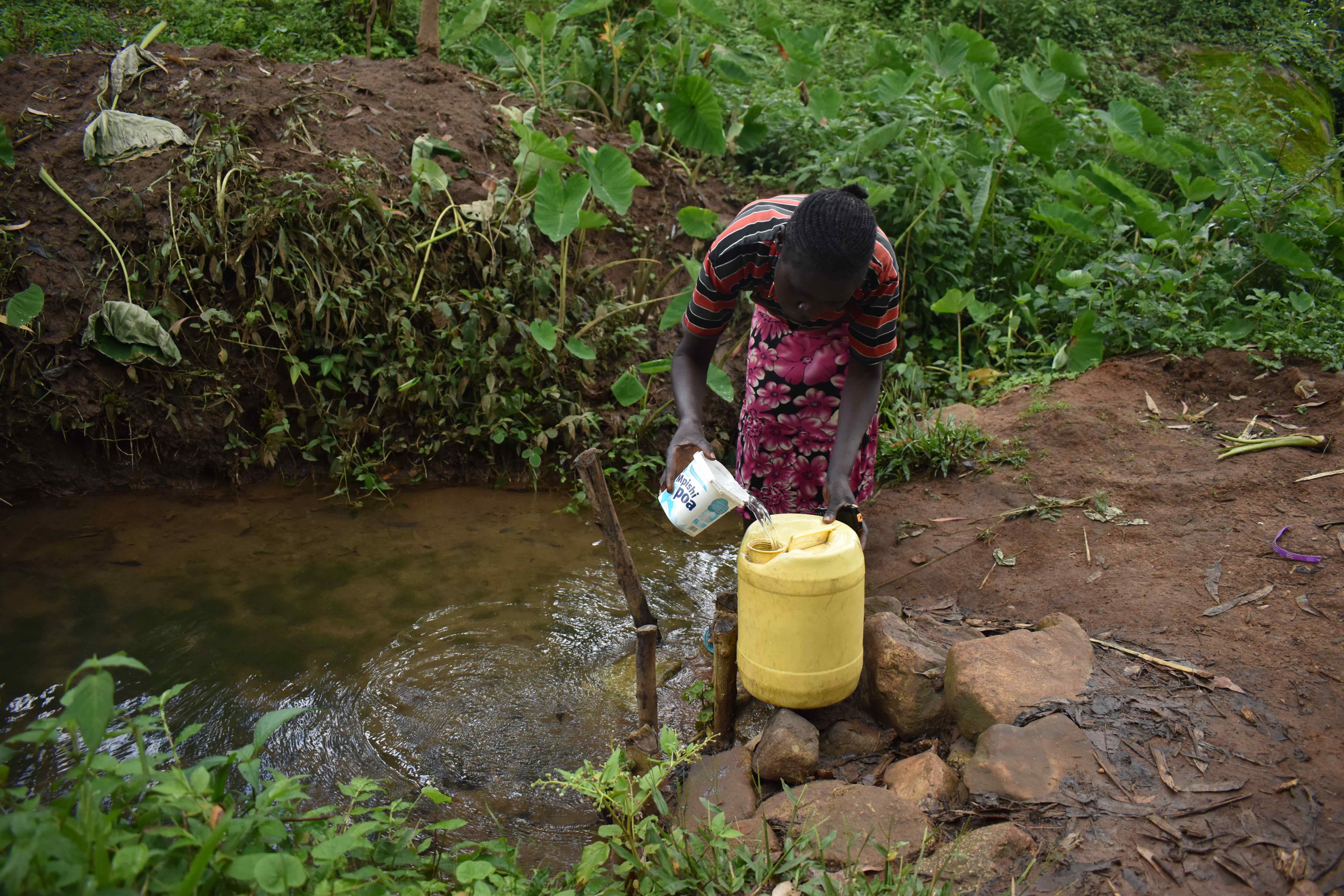
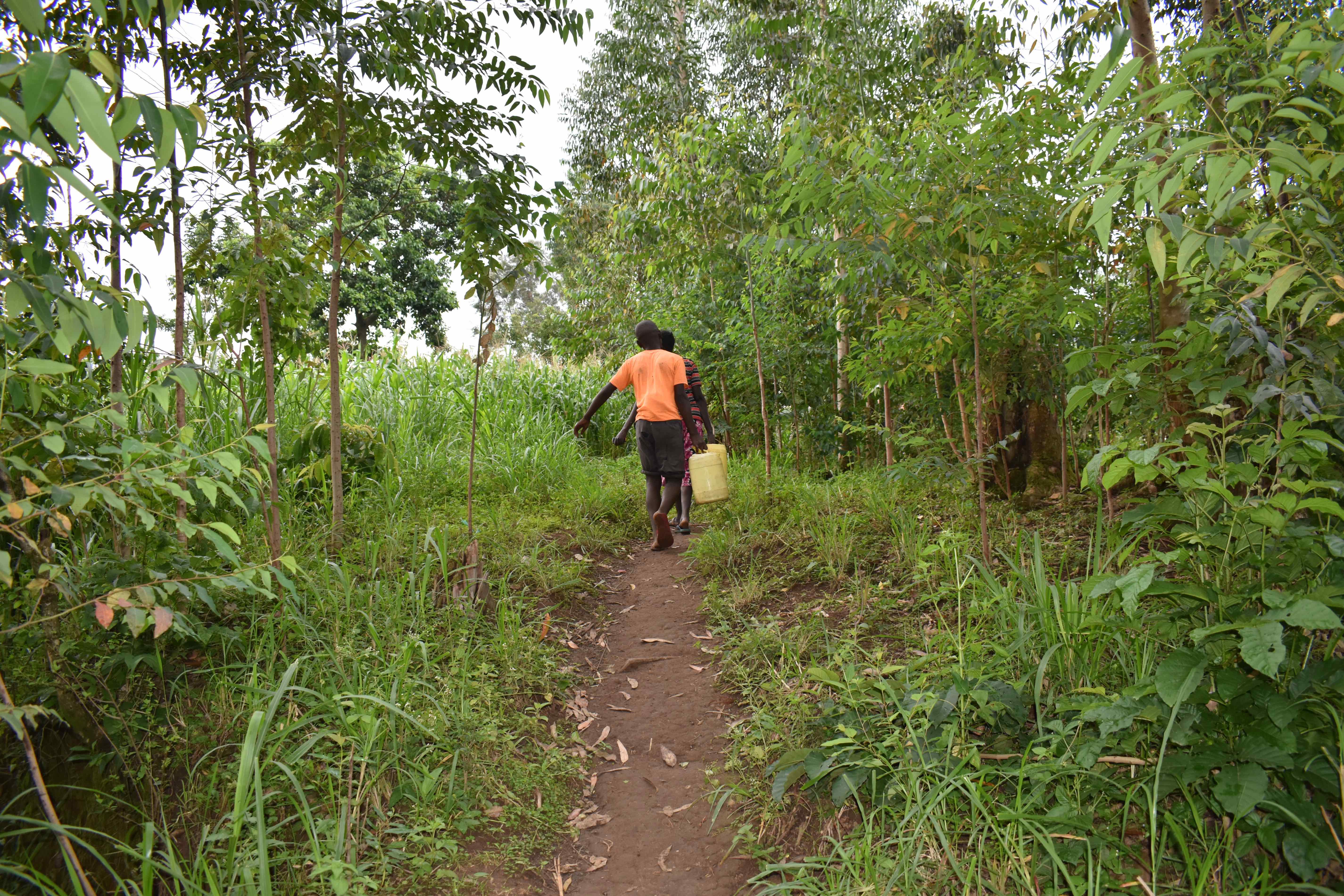
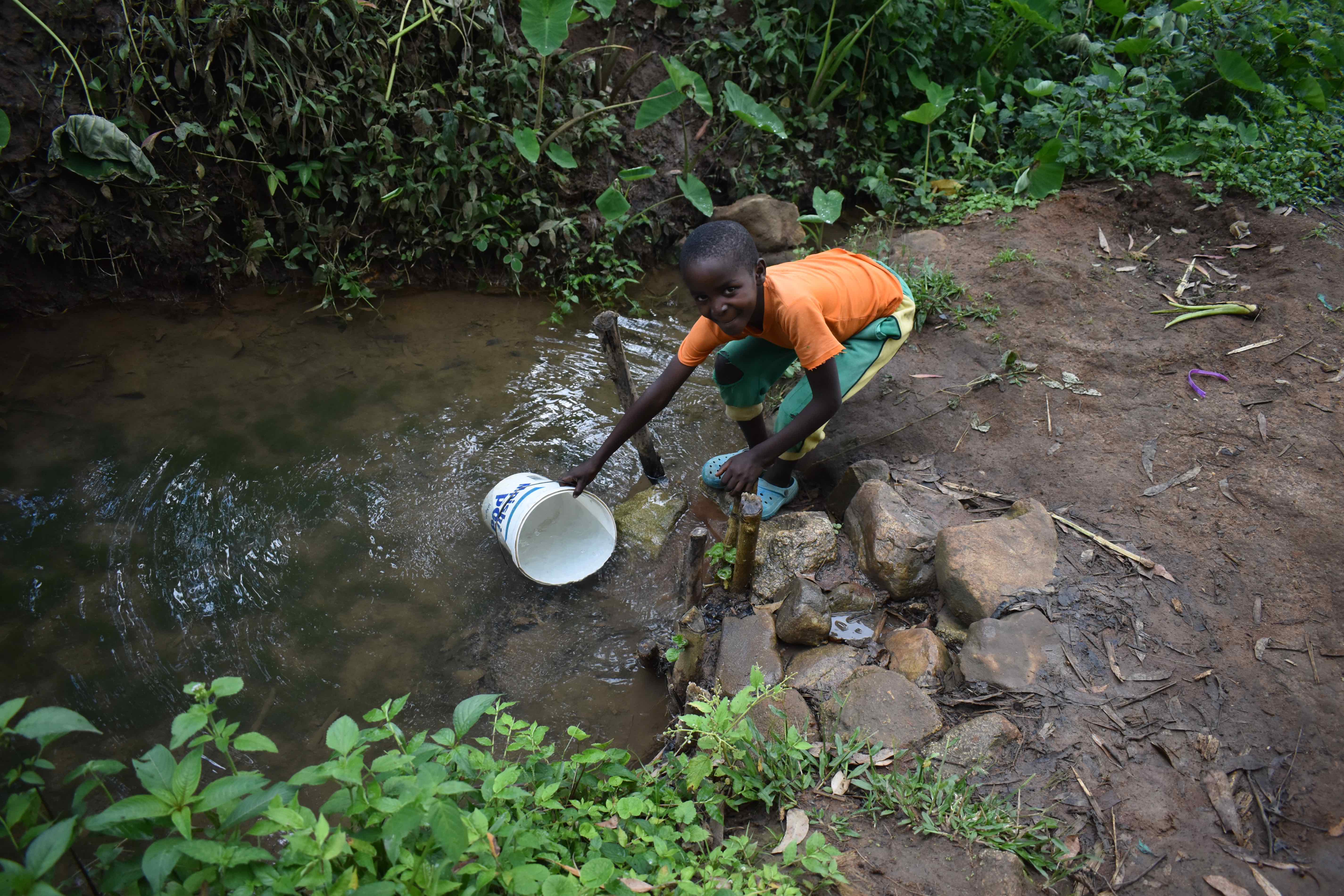

 Protected Spring
Protected Spring
 Rehabilitation Project
Rehabilitation Project










